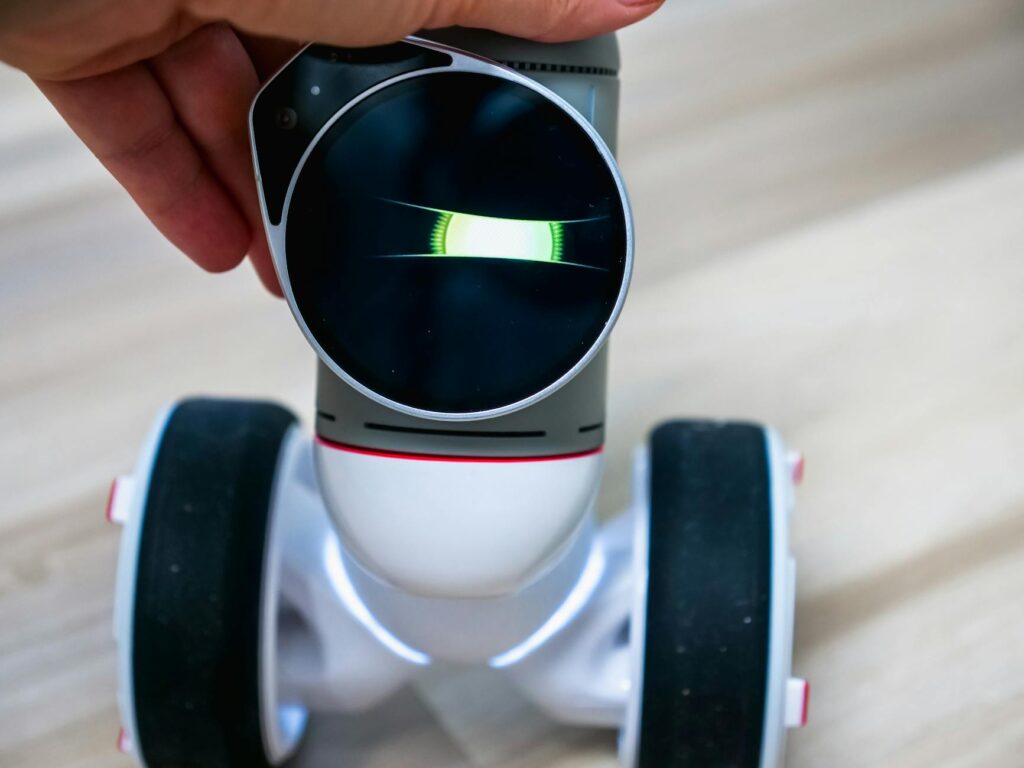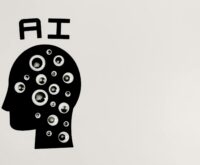Machine Learning Trends: What’s Really Changing the Game?
It feels like you can’t scroll through a news feed or have a conversation about technology without someone mentioning AI. It’s everywhere. But what’s actually happening behind the curtain? The world of AI is driven by machine learning, and it’s evolving at a breakneck pace. Keeping up with the latest machine learning trends isn’t just for data scientists anymore; it’s becoming essential for business leaders, marketers, and anyone curious about where our world is headed. This isn’t about sci-fi fantasies. It’s about practical, powerful shifts that are changing how we work, create, and solve problems right now.
Key Takeaways:
- Generative AI is King: More than just chatbots, this trend is revolutionizing content creation, code generation, and even scientific discovery.
- MLOps is Non-Negotiable: Moving models from a lab to the real world is hard. MLOps provides the framework to do it efficiently and reliably.
- Transparency is a Priority: With Explainable AI (XAI), we’re finally starting to peek inside the ‘black box’ to understand *why* models make the decisions they do.
- AI is Getting Smaller and Closer: TinyML and Edge AI are bringing powerful processing directly to your devices, improving speed and privacy.
Trend 1: The Unstoppable Rise of Generative AI
Let’s just get it out of the way. You can’t talk about current machine learning trends without putting Generative AI front and center. It’s the rockstar of the AI world right now, and for good reason. For years, machine learning was mostly about *analyzing* existing data—classifying images, predicting customer churn, detecting fraud. It was incredibly useful, but it was fundamentally reactive. Generative AI flipped the script. It *creates*.
What Is It, Really?
At its core, Generative AI uses models, often very large ones called Large Language Models (LLMs) or diffusion models, that have been trained on massive datasets. They learn the underlying patterns and structures within that data so well that they can generate brand new, original content that mimics it. This could be text, images, music, code, or even molecular structures. When you ask ChatGPT a question, it’s not searching a database for a pre-written answer. It’s generating a response, word by word, based on the patterns it learned from billions of text examples.

Why It’s a Big Deal Now
The concepts aren’t brand new, but a perfect storm of three things has caused this explosion: massive datasets (thank you, internet), powerful computing power (specifically GPUs), and innovative model architectures (like the Transformer model). This combination has made the models not just functional, but shockingly capable. The applications are spreading like wildfire:
- Content Creation: Marketers are generating ad copy, social media posts, and blog drafts.
- Software Development: Developers are using tools like GitHub Copilot to write boilerplate code, debug, and even learn new languages faster.
- Art and Design: Artists and designers are using tools like Midjourney and DALL-E to create stunning visuals and prototype ideas in seconds.
- Scientific Research: Scientists are using generative models to design new proteins and discover new drugs. The potential here is just staggering.
The conversation is no longer *if* Generative AI will be part of a business’s toolkit, but *how* it will be integrated. It’s a fundamental shift in human-computer interaction.
Trend 2: MLOps Becomes the Backbone
If Generative AI is the flashy race car, MLOps is the expert pit crew, the complex logistics, and the brilliant engineer that makes sure the car actually wins the race. It’s one of the most critical, yet least glamorous, machine learning trends. For years, companies have struggled with the ‘last mile’ problem: a data scientist builds a fantastic model on their laptop, but getting it into a live, production environment where it can provide real value is a nightmare. It’s a process fraught with technical debt, manual handoffs, and versioning chaos.
Breaking Down the ‘Ops’ in MLOps
MLOps, or Machine Learning Operations, is essentially the application of DevOps principles to the machine learning lifecycle. It’s about creating a streamlined, automated, and reliable process for:
- Building and Training: Creating a reproducible environment for training models.
- Validating: Rigorously testing the model for performance, bias, and robustness.
- Deploying: Pushing the model into a live production system seamlessly.
- Monitoring and Managing: Continuously watching the model’s performance in the real world and triggering alerts if it degrades (a concept called ‘model drift’).
Think about it. A model that predicts housing prices trained on 2019 data would be wildly inaccurate today. MLOps creates the pipeline to automatically detect this performance drop, retrain the model on new data, and redeploy it without a human needing to manually intervene for every step. It’s about treating machine learning models not as one-off science projects, but as robust, reliable software products.
The goal of MLOps isn’t just to deploy a model. It’s to create a system where you can deploy *hundreds* of models reliably and maintain them over time. It’s the difference between a hobby and a business.
Trend 3: Explainable AI (XAI) – Opening the Black Box
For a long time, many of the most powerful machine learning models, especially deep learning networks, operated as ‘black boxes.’ You’d feed data in one end, get a decision out the other, and have very little idea *why* the model made that specific choice. This was fine for low-stakes applications like recommending a movie, but it’s a massive problem for high-stakes decisions.
Imagine a bank’s AI model denying someone a loan. If the bank can’t explain *why* the loan was denied, they could be running afoul of regulations like the Equal Credit Opportunity Act. Or consider a medical AI that flags a scan for cancer. A doctor needs to understand the features in the image that led to that conclusion to make an informed diagnosis. This is where Explainable AI (XAI) comes in. It’s not a single technique, but a whole field dedicated to making machine learning models more transparent and interpretable.
Why We Need to See Inside
The push for XAI is driven by several factors:
- Regulation and Compliance: As mentioned, laws like GDPR and others require that decisions made by automated systems can be explained.
- Trust and Adoption: People are far more likely to trust and use a tool they can understand. A doctor won’t rely on an AI’s diagnosis if it’s just a magic black box.
- Debugging and Improvement: If a model is making mistakes, understanding its reasoning is the first step to fixing it. XAI can reveal that a model is focusing on the wrong features—like a model identifying horses by looking for a copyright tag that happened to be in all the training photos!
- Fairness and Bias Detection: XAI is crucial for auditing models to ensure they aren’t making decisions based on sensitive attributes like race, gender, or age.
Techniques like SHAP (SHapley Additive exPlanations) and LIME (Local Interpretable Model-agnostic Explanations) are becoming standard tools for data scientists to probe their models and understand what’s driving their predictions. The age of accepting ‘the computer said so’ is quickly coming to an end.

Trend 4: TinyML and Edge AI – Power in Your Pocket
When you think of AI, you probably picture massive data centers with racks of power-hungry servers. And for training giant models, that’s accurate. But a huge counter-trend is emerging: running AI models directly on small, low-power devices. This is the realm of TinyML and Edge AI.
Instead of your smart speaker sending your voice command to the cloud for processing and then getting the answer back, an Edge AI model could process it directly on the device itself. This has profound implications.
The Benefits of Thinking Small
Why is this one of the key machine learning trends to watch? Because it solves some of the biggest problems with cloud-based AI:
- Privacy: Your personal data never has to leave your device. For things like health monitoring or home security, this is a game-changer.
- Speed and Latency: There’s no round-trip to the cloud, so responses are nearly instantaneous. This is critical for applications like autonomous vehicles or factory robotics where millisecond delays matter.
- Reliability: The device can still function even if it loses its internet connection. Think of a smart tractor operating in a remote field.
- Cost and Energy Efficiency: Constantly sending data to the cloud costs money and consumes a lot of power. Processing locally is far more efficient.
We’re already seeing this in action. The ‘Hey Siri’ or ‘OK Google’ keyword spotting on your phone is a TinyML model. It’s always listening, using minuscule amounts of power, for just that one phrase. You’ll see this trend accelerate in everything from smart home appliances and industrial sensors to wearable health trackers and agricultural monitors.
Trend 5: Multimodal AI – A Richer Understanding of the World
Humans experience the world through multiple senses simultaneously. We see a dog, hear it bark, and read the word ‘dog’. We combine these inputs effortlessly. For a long time, AI models were specialists. One model was great at text (NLP), another was great at images (Computer Vision). They lived in separate worlds. Multimodal AI is about breaking down those walls.
This trend focuses on building models that can understand and process information from multiple ‘modalities’—like text, images, audio, and video—at the same time. OpenAI’s GPT-4, for instance, isn’t just a text model; it can also interpret images. You can give it a picture of the inside of your fridge and ask, ‘What can I make for dinner?’ It will identify the ingredients from the image and suggest recipes using its text-based knowledge. That’s multimodal AI in action.

Why Multiple Inputs are Better Than One
Combining modalities leads to a much deeper, more contextual understanding. It unlocks new capabilities that are impossible with a single-modality model:
- Enhanced Search: You could search your photo library by describing an event, not just by date or location. ‘Find the picture of me laughing at the beach last summer.’
- Richer Content Generation: Generating a video from a text script, complete with visuals, voiceover, and background music.
- More Accessible Technology: Real-time translation apps that can read a sign through your phone’s camera and speak the translation aloud.
- Improved Robotics: A robot that can see an object, hear a command about it, and then perform the correct action.
This is about moving from AI that processes information to AI that *perceives* the world in a more human-like way. It’s a foundational step toward more capable and intuitive artificial intelligence.
Conclusion
The field of machine learning isn’t just growing; it’s accelerating and diversifying. The flashy power of Generative AI is grabbing headlines, but the real, sustainable progress is being built on the essential foundations of MLOps, the trust-building transparency of XAI, and the expanding reach of TinyML and Multimodal systems. These trends aren’t isolated. They’re interconnected, each one enabling and amplifying the others. Keeping an eye on these developments is no longer just an academic exercise. It’s a preview of the tools, challenges, and opportunities that will define the next decade of technology and business. The future isn’t just coming—it’s being coded, trained, and deployed right now.
FAQ
What is the difference between AI and Machine Learning?
Think of it like this: Artificial Intelligence (AI) is the broad, overarching concept of creating machines that can think or act intelligently. Machine Learning (ML) is a *subset* of AI. It’s the most common and powerful approach we have today for achieving AI. ML is specifically about creating systems that can learn from data to make predictions or decisions, rather than being explicitly programmed with rules.
Is MLOps just for large tech companies?
Not at all! While large companies like Google and Netflix pioneered many MLOps practices, the principles and tools are now more accessible than ever. Cloud platforms (like AWS, Google Cloud, and Azure) offer managed MLOps services, and there are many open-source tools available. Any organization, big or small, that wants to reliably use machine learning in production needs to adopt MLOps principles to avoid chaos and ensure their models deliver lasting value.



 AI in Education: The Future of Personalized Learning
AI in Education: The Future of Personalized Learning  Future of Artificial Intelligence: What’s Really Next?
Future of Artificial Intelligence: What’s Really Next?  Navigating the Ethical Concerns of Artificial Intelligence
Navigating the Ethical Concerns of Artificial Intelligence  AI for Small Businesses: A Practical Guide to Growth
AI for Small Businesses: A Practical Guide to Growth  AI and Automation: Reshaping Our World & Work
AI and Automation: Reshaping Our World & Work  AI and Automation: The Future of Work is Here
AI and Automation: The Future of Work is Here  What Are AMMs? Automated Market Makers Explained Simply
What Are AMMs? Automated Market Makers Explained Simply  NFT Legal Questions Answered: A Simple Guide
NFT Legal Questions Answered: A Simple Guide  Build a Balanced Cryptocurrency Portfolio: A 2024 Guide
Build a Balanced Cryptocurrency Portfolio: A 2024 Guide  Reading Smart Contract Audits: A Beginner’s Guide
Reading Smart Contract Audits: A Beginner’s Guide  Dynamic NFTs: The Evolving Future of Digital Assets
Dynamic NFTs: The Evolving Future of Digital Assets  How Macroeconomics Drives the Crypto Market (2024 Guide)
How Macroeconomics Drives the Crypto Market (2024 Guide)